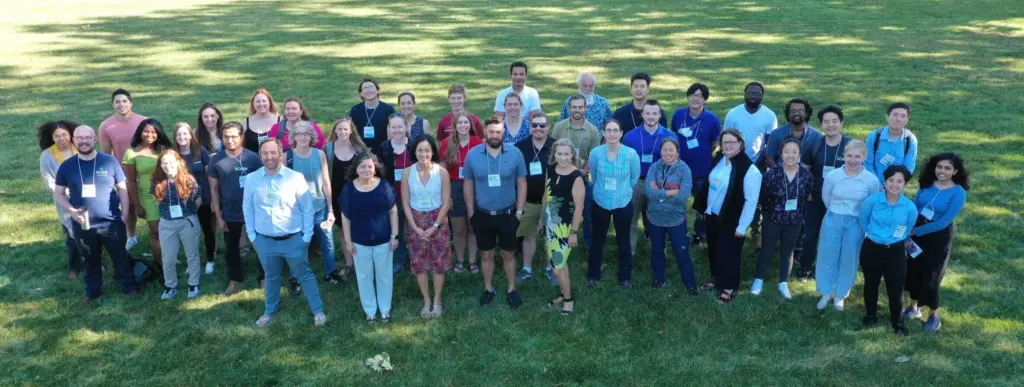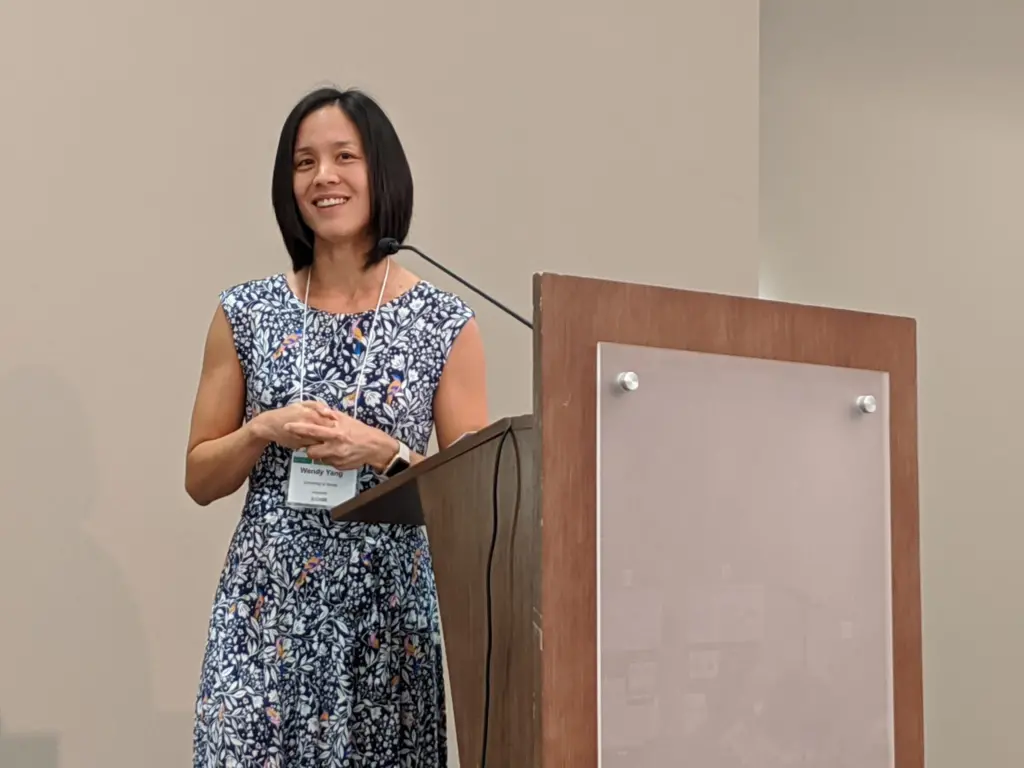
In CABBI’s first five years, the center has made incredible strides in the sustainable production of biofuels and bioproducts. As CABBI transitions into Year 6, it’s the perfect time to reflect on the work that’s been done and the vision for CABBI’s endeavors in years to come. Overseeing this transition for CABBI’s Sustainability research is Wendy Yang, who recently was named Sustainability Theme leader. Yang, an Associate Professor of Plant Biology and Geology at the University of Illinois Urbana-Champaign, was previously the deputy leader for Madhu Khanna.
“I felt very lucky to be invited to help set the vision for what our team was going to try to accomplish during Phase I,” Yang said. “It’s exciting to now be five years down the road, and we’re starting to see our projects come to fruition.”
CABBI’s Sustainability Theme emphasizes holistic sustainability. Researchers in this theme use data-driven and integrated modeling frameworks to determine which feedstock combinations, regions and land types, market conditions, and bioproducts have the potential to support the ecologically and economically sustainable displacement of fossil fuels.
In the last five years, many interdisciplinary collaborations in the Sustainability Theme were established between researchers who take field measurements and those who create ecosystem models. These collaborations have been crucial in fostering integrated measurement-modeling studies. In these studies, researchers build ecosystem models to help generate hypotheses, which the measurement teams will then test out in the field and in the lab. Additionally, the data that CABBI’s measurement teams generate are being used to improve the modeling teams’ ecosystem models. These ecosystem models are so exciting because they can be used to predict sustainability outcomes over longer time scales and larger geographic regions than can be measured.
Another major achievement in the last five years has been the establishment of extensive field measurement infrastructure at three field sites: the Illinois Energy Farm, the Sustainable Advanced Bioeconomy Research Site at Iowa State University, and the Archbold Biological Station in south-central Florida. More targeted measurements on other field sites across different land types and climate regions allows CABBI’s inference space to expand beyond these hubs.

As the Sustainability Theme transitions into Year 6, more exciting developments are in store, Yang says. Along with her promotion to Theme Leader, other appointments include the official addition of Nuria Gomez-Casanovas (Texas A&M AgriLife Research) and Marshall McDaniel (Iowa State) as new Co-PIs. Gomez-Casanovas and McDaniel will lead research objectives focusing on cane and miscanthus, respectively.
Previously, the Sustainability Theme was structured around the approaches that the different investigators were using: ecosystem measurements, ecosystem modeling, big data, techno-economic analysis and life cycle assessment, and economic analysis. But because the teams have become so integrated, the structure has evolved to reflect the three hierarchical scales of a sustainable bioeconomy: ecosystem processes, biorefineries, and the bioeconomy as a whole. Data generated at each scale will be put into a new Sustainability Data Hub that will support the design of an ecologically and economically sustainable bioeconomy in the rainfed U.S.
With this new research structure in place, a lot of exciting things are happening. The Feedstock Production Theme has been working on oil-enhanced crops, and the Sustainability Theme is getting ready to put these crops to the test. Researchers plan to assess how the elevated oil content of these crops might change ecosystem carbon and nitrogen cycling.
“This collaboration will be a two-way street,” Yang said. “The Sustainability Theme is getting the newly developed oil-enhanced and improved crops from the Feedstocks Theme to evaluate. And from our evaluation, we’ll work with the Feedstocks Theme to determine the high priority sustainability traits to target.”
On the topic of nutrient cycling, the Sustainability Theme is collaborating with the Conversion Theme. With the powerful metabolic flux models developed by Conversion researchers, CABBI scientists will be able to see what metabolites a plant is putting into the soil and how soil microbes make use of those metabolites to support crop productivity, increase soil carbon stocks, or provide other sustainability benefits. This collaboration will allow researchers to study how metabolic activity and nutrient cycling are intertwined.
Nutrient cycling studies will also be bolstered by the new CABBI Stable Isotope Labeling Facility currently under construction at Illinois. The facility will be a powerful tool that allows researchers to investigate plant-soil-microbe interactions by tracing the movement of 13C, a rare stable isotope of carbon. By using 13C as a tracer, researchers can follow the cycling of carbon through plants, soil, and plant and soil microbiomes.
Another new CABBI partnership comes in the form of investigating deep soil. Researchers don’t yet understand how ecosystem processes function below 30-centimeter depth because digging that deep is difficult. However, deep soil can be important to overall ecosystem function because it can very effectively store carbon.
To study deep soil, CABBI is teaming up with AGgrow Tech, a commercial miscanthus operation that has fields in the Midwest and Eastern U.S. This partnership will allow CABBI to get deep soil cores from AGgrow Tech’s sites, and CABBI will share deep soil data and knowledge with AGgrow Tech to inform the operation’s business decisions. CABBI researchers hope to both gain a better mechanistic understanding of what’s going on deep below ground, and also feed those data to the ecosystem modelers so that they can start building deep soil representation into their models.
“This partnership will allow us to look at a wide variety of cores from different places in different conditions,” Yang said. “It’s very possible that for a lot of the processes that we’re investigating, the controls on those processes are context dependent. For example, if you have sandy soil or a soil with a lot of clay, the way carbon cycles is just inherently going to be different between those two types of soil. If we only ever study deep soil from the Illinois Energy Farm and our Iowa State site, we would be inaccurately representing all the sandier sites that exist across the Eastern U.S. and elsewhere.”
Between all the partnerships, collaborations, and passionate people driving CABBI’s work forward, Yang emphasizes that in the face of climate change, there is hope. On the industry side, companies like AGgrow Tech are planting more and more acres of miscanthus every year, and they’re finding ways to make it a successful business model. And as CABBI has illustrated, researchers at the forefront of their fields are coming together to tackle this problem from all angles.
“Climate change demands transformative, holistic solutions,” she said. “I believe that, especially with the big strides that we’ve made with BioSTEAM techno-economic analysis software, we’re providing a new way of evaluating where the research priorities are right now, so that we know where to put effort into overcoming those obstacles.”
— Article by CABBI Communications Specialist April Wendling